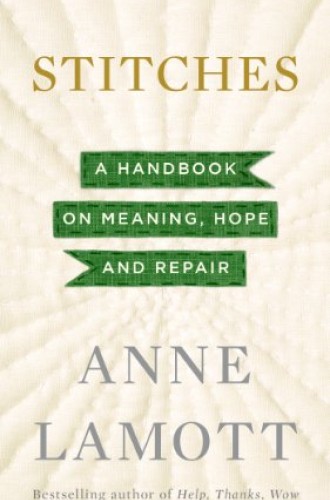Anne Lamott gives testimony
When her publisher scheduled Chicago as a stop on her book tour, Anne Lamott asked that the reading be held at Broadway United Methodist Church. She’s worshiped there in the past and feels at home. Broadway openly welcomes people of every sexual orientation and has worked for years to press the denomination to change its rules on gay marriage. It’s been a long-term effort: in 1998 former pastor Greg Dell performed a service of holy union for two gay men at Broadway and was tried and suspended from the pastorate for one year.
The congregation also welcomes those who are recovering from addictions, and Lamott appreciates this. Dressed in jeans and T-shirt, she joked that she’s recovering from almost everything—relationship addiction, OCD, alcoholism, drugs—but not from gambling, she added quickly. That one was never on the list.
Lamott gave a hilarious account of the trials and tribulations of preparing for an interview with Oprah. And when a fan asked her what she was currently reading, she feigned embarrassment before admitting that she was reading a Grisham novel to get her through plane rides. Those of us in the crowd enjoyed the stand-up comedy—Lamott’s humor is blade-sharp.
But what lingered in my mind afterward was her faith testimony. It’s been 30 years now since her conversion, and 30 years since she began attending the St. Andrew Presbyterian church. The denominational identity makes this tweet from Lamott funny to many of us Presbyterians:
Talked writing today but was @ church so cdn't say "shitty 1st drafts." Didn't want to give Presbies bad name--already God's frozen people.
— ANNE LAMOTT (@ANNELAMOTT) November 11, 2013
A few tweets later: “[and] I became one: God works in mysterious ways, Her tum-tum to perform.” (See also her tweets to Donald Trump.)
As a faithful church member, Lamott knows about the tedium, joy and disappointment that come with congregational life, yet she also sees and writes about the sustenance of worship—and the moments of grace that pop up as needed.
One of these moments occurs when she’s teaching Sunday school. Two teenagers show up, and class interaction is minimal. (Lamott does all the talking.) Then she announces a craft project, and the class experience takes an unexpected turn. A story, some humor, and a grace note. It’s Lamott’s strength.
Stitches was written as a response to the Newtown tragedy, but the material is not all that new. Lamott recaps familiar themes and life-changing moments: her grief over the loss of her friend Pammy, her efforts to understand a home where she “never felt at home.”
I was most impressed by Lamott’s faith testimony at Broadway, and if her book conveys this to readers, they won’t mind that they’ve heard some of it before.
Lamott demonstrated a calm tenderness toward those in the audience who asked for her response to their personal crises or tragedies. I saw a great tenderness and a hard-earned capacity for reaching out to others. Readers who hope to fast-forward past her faith won’t get far. Lamott is alive because of her encounter with Christ, she says, and she clings to that. It’s the key to her very existence, her hope and joy.
Finally, here’s another anecdote from Stitches. This one is for all of us who serve and endure and grow in a congregation. First an artifact. A darning egg is an object that a seamstress puts into the ankle of a sock to hold the fabric taut while she mends a hole.
Church, Lamott says, is like a darning egg, giving us “a shape to work against”:
Darning is to send parallel threads through the damage in socks and sweaters, in and out, in and out, back and forth, over and under, and somehow, you have a piece of fabric again—such as the heel of a sock, that’s good enough again, against all odds.




